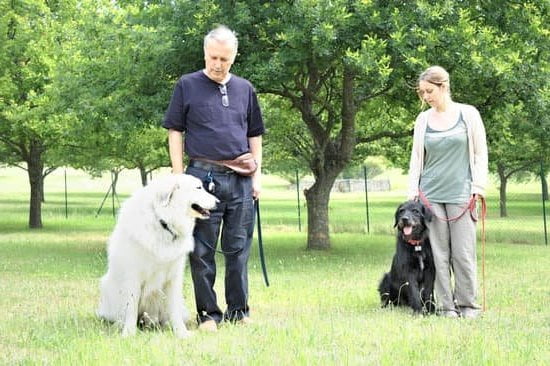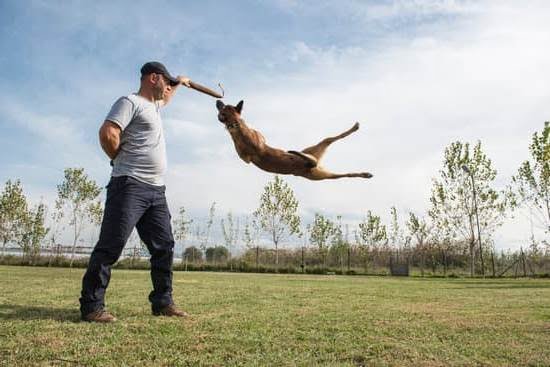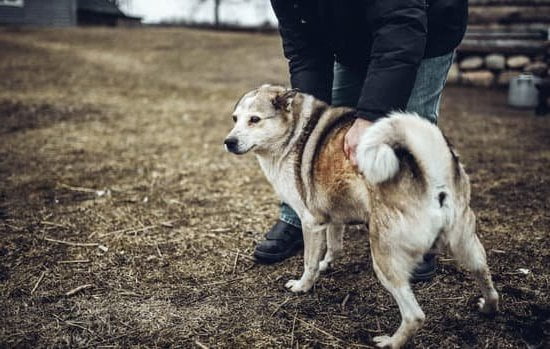Are you passionate about working with animals and interested in pursuing a career in the field of pet care? If so, then dog grooming training may be the perfect path for you to explore.
With the increasing demand for professional dog groomers, investing in proper training and education can provide you with the necessary skills and knowledge to excel in this rewarding career. In this article, we will delve into the essential aspects of dog grooming training, from choosing the right program to understanding the basics and ensuring the safety and well-being of the dogs in your care.
When it comes to dog grooming training, it is crucial to select the right program that aligns with your goals and aspirations. Factors such as accreditation, curriculum, hands-on experience, and instructor expertise are important considerations to take into account. Understanding these key factors will help you make an informed decision and set you on the path towards a successful career as a professional dog groomer.
In addition to choosing the right program, grasping essential tools and techniques for dog grooming is fundamental to your success in this field. From brushing and bathing to nail trimming and ear cleaning, mastering these basics through hands-on training is vital in providing quality grooming services for dogs. Furthermore, ensuring their safety by following proper guidelines and protocols during grooming sessions is paramount for maintaining their well-being throughout the process.
Choosing the Right Dog Grooming Training Program
When considering a career in dog grooming, choosing the right training program is crucial to ensure that you receive the necessary knowledge and skills to become a successful professional. With the growing demand for skilled dog groomers, there are various training programs available, making it important to carefully evaluate your options before making a decision. Here are some factors to consider when choosing the right dog grooming training program.
Accreditation and Reputation
One of the most important factors to consider when choosing a dog grooming training program is accreditation and reputation. Look for programs that are accredited by recognized organizations within the industry. Additionally, research the reputation of the training program by reading reviews from past students and seeking recommendations from established professionals in the field.
Curriculum and Hands-on Experience
A comprehensive curriculum and hands-on experience are essential components of a quality dog grooming training program. Ensure that the program covers essential topics such as breed-specific grooming techniques, handling different coat types, basic health and safety practices, as well as business management skills for those interested in starting their own grooming business.
Trainer Qualifications and Support
Another factor to consider is the qualifications of the trainers and the level of support provided throughout the program. Experienced and knowledgeable instructors can greatly impact your learning experience. Additionally, inquire about post-graduation support such as job placement assistance or continuing education opportunities. By carefully considering these factors, you can choose a dog grooming training program that best aligns with your career goals and aspirations.
Understanding the Basics
Dog grooming is an essential aspect of pet care, and understanding the basics is crucial for ensuring the comfort and well-being of our furry friends. Whether you are considering a career in dog grooming or simply want to learn how to maintain your pet’s hygiene at home, mastering the essential tools and techniques is key.
Essential Tools for Dog Grooming
Before diving into the world of dog grooming, it’s important to familiarize yourself with the essential tools required for the job. A set of high-quality clippers, scissors, combs, and brushes are indispensable for maintaining a dog’s coat. Additionally, nail clippers, ear cleaning solutions, and toothbrushes are important for overall hygiene. Understanding how to use each tool properly and safely is fundamental in providing a comfortable grooming experience for the dog.
Basic Grooming Techniques
Learning basic grooming techniques such as brushing, bathing, and trimming is essential for any aspiring dog groomer. Brushing helps to remove tangles and prevents matting, while bathing keeps the coat clean and healthy. Trimming hair around the eyes, ears, paws, and sanitary areas is also necessary for maintaining a neat appearance. Moreover, understanding different coat types and breeds will determine which grooming techniques are most suitable for each individual dog.
Proper Handling and Restraint
In addition to mastering tools and techniques, proper handling and restraint play a crucial role in ensuring the safety and comfort of both the groomer and the dog. Training in good handling practices ensures that dogs feel secure during grooming sessions, minimizing stress or discomfort. Understanding canine behavior cues is also vital in creating a positive grooming experience for both parties involved.
With proper knowledge of essential tools, techniques, handling practices-and effective
Dog Grooming Safety
Ensuring the safety and well-being of the dog is a crucial aspect of dog grooming training. It is important for groomers to be knowledgeable about the proper handling and care techniques to prevent any harm or injury to the dogs in their care. One essential aspect of dog grooming safety is understanding the behavior and body language of dogs. Groomers should be able to recognize signs of stress, fear, or discomfort in dogs, and know how to respond appropriately.
In addition, it is important for dog groomers to use safe and appropriate grooming tools and products. This includes using sharp scissors and clippers with caution to avoid accidental cuts or nicks, as well as ensuring that grooming products such as shampoos and conditioners are suitable for the dog’s skin type. Properly maintaining and sanitizing grooming tools is also essential for preventing cross-contamination between dogs.
Furthermore, creating a safe and comfortable environment for the dogs during the grooming process is crucial. This includes providing non-slip surfaces on grooming tables, using restraints when necessary to prevent falls or escape attempts by the dog, and maintaining a clean and organized workspace to minimize potential hazards. By prioritizing dog grooming safety through proper training and adherence to guidelines, groomers can ensure that each dog receives professional care in a secure and nurturing environment.
Overall, dog grooming safety should be at the forefront of all dog grooming training programs. By emphasizing best practices in handling, tool usage, product selection, and environmental considerations, aspiring groomers can develop the skills necessary to provide excellent care while minimizing risk for their furry clients.
Hands-on Training
When it comes to dog grooming training, hands-on experience is crucial for aspiring dog groomers. This practical learning approach allows students to apply the knowledge and skills they have acquired in a real-world setting. The hands-on aspect of training provides invaluable experience and prepares individuals for the challenges they will face in their careers as professional dog groomers.
Here are some key components of hands-on training in dog grooming:
- Bathing and drying techniques: Students learn how to properly bathe and dry various breeds of dogs, taking into consideration their specific coat types and skin sensitivities.
- Nail trimming and ear cleaning: Proper nail trimming and ear cleaning are essential aspects of dog grooming. Students are taught how to safely trim nails and clean ears without causing any discomfort or harm to the dogs.
- Grooming tools and equipment: Hands-on training allows students to familiarize themselves with the different grooming tools and equipment used in the industry, such as clippers, brushes, shears, and dryers. They learn how to handle these tools effectively and efficiently.
In addition to learning basic grooming techniques, hands-on training also provides students with the opportunity to interact with dogs of various temperaments and behavior. This helps them develop the patience, confidence, and handling skills necessary to work with a wide range of canine clients. Overall, hands-on training is an essential component of dog grooming education, giving students the practical experience they need to succeed in this rewarding career.
Certification and Career Opportunities
Becoming a professional dog groomer requires the right certification and training. There are various options for dog grooming training programs, including online courses, in-person classes, and apprenticeships. Many aspiring dog groomers choose to enroll in a formal program to gain the necessary skills and knowledge. These programs often cover topics such as breed-specific grooming techniques, handling difficult pets, and running a successful grooming business.
When choosing the right dog grooming training program, it is important to consider factors such as accreditation, course curriculum, hands-on experience opportunities, and the expertise of instructors. Look for programs that offer practical training in addition to classroom learning. Some schools even provide opportunities for students to work with real clients under the supervision of experienced groomers.
After completing a dog grooming training program, individuals have the opportunity to pursue certification from organizations such as the National Dog Groomers Association of America (NDGAA) or International Professional Groomers (IPG). Certification can enhance career opportunities and demonstrate proficiency in the field. Many employers prefer to hire certified groomers, and some states may require certification for individuals working in pet grooming businesses.
| Dog Grooming Training | Benefits |
|---|---|
| Formal program | Gain skills and knowledge |
| Accreditation | Practical training opportunities |
| Certification | Enhanced career opportunities |
Advanced Dog Grooming Training
Once a dog groomer has mastered the basics of grooming, they may want to pursue advanced training to further specialize in certain techniques and services. Advanced dog grooming training programs offer groomers the opportunity to expand their skills and knowledge, ultimately providing them with a competitive edge in the industry.
One specialized technique that advanced dog grooming training covers is hand-stripping, which is commonly used for wire-haired breeds such as terriers. This method involves removing dead hair by hand rather than using clippers, resulting in a unique and natural look for the dog. Additionally, advanced training may also include learning techniques for creative grooming, such as intricate coat coloring, shaping, and styling.
In addition to specialized techniques, advanced dog grooming training programs often cover specific services that cater to the individual needs of different breeds. This can include learning how to properly groom dogs with double coats or special care requirements, as well as understanding the particular grooming needs of show dogs. By gaining expertise in these specialized techniques and services through advanced training, dog groomers can attract a wider clientele and increase their earning potential.
| Specialized Techniques | Specialized Services |
|---|---|
| Hand-stripping | Grooming double-coated breeds |
| Creative grooming (coloring, shaping) | Grooming show dogs |
The Future of Dog Grooming Training
- High-Tech Grooming Tools: With technological advancements, new grooming tools are constantly being developed to make the grooming process more efficient and effective. From high-velocity dryers to cutting-edge shears and clippers, dog groomers now have access to a wide range of innovative tools that can help them deliver top-notch grooming services.
- Eco-Friendly Grooming Products: As pet owners become more environmentally conscious, there is a growing demand for eco-friendly grooming products. Dog groomers can expect to see an increase in the availability of organic shampoos, conditioners, and other grooming products that are safe for both pets and the environment.
- Specialized Grooming Services: In response to the diverse needs of pet owners, specialized grooming services are becoming increasingly popular in the industry. From creative grooming and show dog styling to holistic and spa treatments, dog groomers can expand their skill set by offering specialized services that cater to specific breeds or preferences.
With these trends shaping the future of dog grooming training, it’s essential for aspiring dog groomers to seek out programs that incorporate these innovations into their curriculum. By staying informed about emerging trends in the industry and gaining hands-on experience with advanced techniques and tools, individuals can position themselves for success in this rewarding career path.
Conclusion
In conclusion, choosing a career in dog grooming training can be a rewarding and fulfilling choice for those who have a passion for working with animals. The training programs available provide individuals with the essential knowledge, skills, and hands-on experience needed to become successful professional dog groomers. By enrolling in a reputable dog grooming training program, individuals can learn the necessary techniques, safety guidelines, and specialized services that are crucial for the well-being of dogs under their care.
Furthermore, the demand for skilled and certified dog groomers continues to grow, creating numerous career opportunities in various settings such as grooming salons, pet spas, veterinary clinics, and even mobile grooming services. With the right certification and training, individuals can pursue advanced dog grooming techniques and services, further enhancing their expertise and marketability in the industry.
Frequently Asked Questions
Do You Need a Dog Grooming License in Colorado?
In Colorado, dog groomers do not need a specific state-issued license to practice. However, they may need to comply with local business licensing and zoning regulations. It’s important for aspiring dog groomers to research these requirements before starting their business.
What Do You Need to Be a Dog Grooming?
To become a dog groomer, one typically needs to complete a training program at a grooming school or through an apprenticeship with an experienced groomer. It’s also beneficial to gain hands-on experience working with different breeds and learning various grooming techniques.
Additionally, having good customer service skills and patience is essential when working with both dogs and their owners.
Do Dog Groomers Need a License in PA?
In Pennsylvania, there is no statewide requirement for dog groomers to obtain a specific license. However, some municipalities within the state may have their own regulations or licensing requirements for pet grooming businesses. Aspiring dog groomers in PA should research the specific requirements in their area before starting their career.

Welcome to the blog! I am a professional dog trainer and have been working with dogs for many years. In this blog, I will be discussing various topics related to dog training, including tips, tricks, and advice. I hope you find this information helpful and informative. Thanks for reading!





